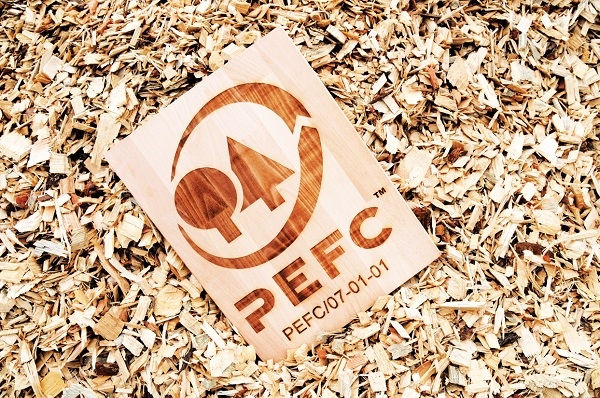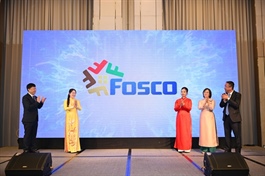Adopting global forest certification – a method for companies to protect forest resources
Adopting global forest certification – a method for companies to protect forest resources
The trend towards adopting global forest certifications is gaining traction among nations and companies in the region, including Việt Nam, amid the ongoing challenges of climate change and biodiversity loss.

Over the last two decades, Việt Nam has had to balance its need for rapid economic growth with safeguarding the environment. -- Photo from Internet |
The trend towards adopting global forest certifications is gaining popularity among nations and companies in the region, including Việt Nam, amid the ongoing challenges of climate change and biodiversity loss.
In Việt Nam, the Government is gradually charting a new direction towards conservation, restoration, and greater responsibility for forest resources.
Over the last two decades, Việt Nam has had to balance its need for rapid economic growth with safeguarding the environment. Among its most pressing issues has been the management of the country’s forestry resources, which have been threatened by agricultural expansion, illegal logging, and infrastructure development.
The country's forest landscape has undergone a notable transformation.
According to the Department of Forestry and Forest Protection under the Ministry of Agriculture and Environment, in 2000, national forest cover was at a mere 34 per cent.
By 2024, this figure had risen to 42.02 per cent, a testament to concerted government efforts, community engagement, and international collaboration.
Key pillars of this resurgence include the Việt Nam Forestry Development Strategy and the National Forestry Programme for 2021-2030, both of which outline ambitious but achievable targets, such as 345,000 hectares of reforested land per year.
Additionally, natural forest regeneration is underway at 537,000 hectares, and over 2.3 million hectares of plantation forests are actively maintained.
These efforts illustrate Việt Nam's shift from forest depletion to a model of resource stewardship, paving the way for the sustainable growth of industries that depend on healthy forest ecosystems.
At the heart of this shift lies a national commitment to sustainable forest management, which plays a critical role in sequestering carbon, preserving biodiversity, and supporting the livelihoods of millions.
One of the tools facilitating this practice is the Programme for the Endorsement of Forest Certification (PEFC), which provides a framework and a system for verifying that forests are managed in a way that balances ecological, social, and economic needs, ensuring their health and productivity for current and future generations.
PEFC is one of the world’s largest forest certification organisations, with approximately 300 million hectares of certified forests globally. PEFC operates independently, comprising national forest certification systems and international organisations. It provides standards for sustainable forest management and chains of custody to meet market requirements, particularly in promoting environmental and economic sustainability.
Việt Nam became the 50th member of PEFC in 2019.

Over the last two decades, Việt Nam has had to balance its need for rapid economic growth with safeguarding the environment. -- Photo from Internet |
On the PEFC website, Ben Gunneberg, CEO of PEFC International, said: “Việt Nam is an excellent example of PEFC’s efforts and our unique approach, working together as an alliance, where we have mature members in the key consuming markets, helping new members like Việt Nam to grow by offering market linkage support.”
According to the Department of Forestry and Forest Protection under the Ministry of Agriculture and Environment, PEFC helps ensure over 75 per cent traceability assurance from source to product, with a double-digit growth rate in demand for PEFC-certified products globally and measurable reductions in illegal logging activities in PEFC-compliant regions.
Through controlled logging, replanting programmes, and community forestry initiatives, paper manufacturers are realigning their operations with principles of sustainability. In doing so, they are not only protecting ecosystems but also ensuring long-term business viability in a world where environmental compliance is increasingly non-negotiable.
Lessons from regional companies highlight the importance of adopting PEFC.
APRIL Group, which received PEFC, stood out not only for its robust internal sustainability framework but also for its deep engagement with local communities.
An integral part of APRIL's sustainability strategy is strict adherence to PEFC standards throughout the entire supply chain, from tree planting and harvesting to processing and consumption. This not only enhances brand reputation but also expands opportunities to access the global market, where consumers increasingly prioritise products with clear origins and environmental friendliness.
Aldo Joson, head of Sustainability Operations at APRIL Group, said: “Our internal sustainability mechanism, which allocates resources to conservation and social development on an ongoing basis and combines financial accountability with grassroots engagement, has led to thousands of hectares of community-conserved forests, increased local incomes through sustainable agroforestry, and educational programmes that raise awareness of forest stewardship from an early age.”
Taking a lesson from APRIL, Việt Nam can expand the scale of community forestry projects, enhance technical training for farmers and forest owners, and strengthen oversight of raw material supplies from PEFC-certified plantation forests. If executed successfully, this will serve as a foundation for Việt Nam's forestry sector to not only develop sustainably but also make a tangible contribution to global efforts in protecting the planet.
- 08:18 14/07/2025























